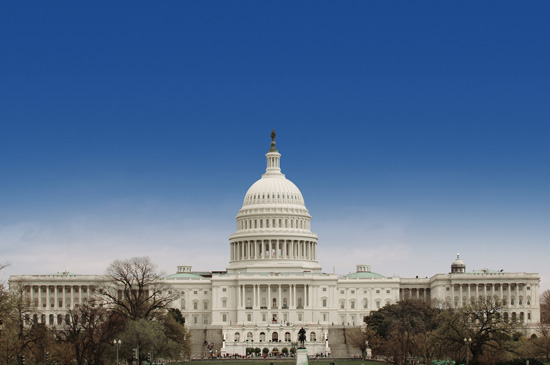Signed into law by President Roosevelt in 1935, the Social Security Act remains one of the largest and most commonly misunderstood social insurance programs in the United States. In this two-part article, we are talking about Social Security, starting from what it is and how it's funded, to issues surrounding retirement, the long-term projections of the trust fund reserves, and legislative actions we need to sustain our Social Security system.
In Social Security Basics: What's It All About?, we discussed:
- The History of Social Security Programs
- What Is Social Security, Really?
- Old Age and Survivors Insurance (OASI) and Disability Insurance (DI) Funds
In this segment, Social Security: The Long-Term Financial Outlook and Retirement Benefits for All Americans, we will focus on:
- Retirement benefits for all Americans
- Long-term projections provided by the 2017 Trustees Report
- Legislative actions required by 2028 to fund Disability Insurance (DI)
- Policy actions you can take regarding Social Security
Retirement
Social Security is important to older Americans, particularly those with disabilities. The risk of work-limiting health problems rises with age, and there are more people in their 50s or early 60s receiving DI benefits than any other age group[i]. "Three-fourths of DI beneficiaries are over age 50, and one-third are over 60"[ii]. Further, the benefits these older Americans receive each month are of vital importance. Over half of DI beneficiaries in their 50s and 60s rely on DI benefits for more than 75 percent or more of their total income [iii].
As mentioned in part 1 of this 2-part series, Social Security is one system. Therefore, workers with disabilities are able to transition seamlessly from Social Security's DI benefits into the retirement benefits system upon reaching full retirement age, currently 66. Every year, 2.8 million Americans start receiving Social Security retirement benefits for the first time[iv]. Of these, 16 percent, or about half a million people, experience the conversion of their benefits from disability to retirement benefits without any change in their payments[v]. The beauty of the single system at work! Since 1985, 7 million older adults have made this transition[vi].
The Role of Social Security's Board of Trustees
Since the Social Security Act was first established in 1935, a Board of Trustees was charged with preparing an annual report to Congress on the projections about the future finances of Social Security's two trust funds, the Old Age and Survivors (OASI) Trust Fund and the Disability Insurance (DI) Trust Fund. This Board is made up of six members: the Secretaries of the Treasury, of Labor, of Health and Human Services; the Commissioner of Social Security; and two trustees representing the public who must be from different political parties and are appointed by the President and confirmed by the Senate[vii]. In this annual report, the Board projects Social Security's financial balance over 75 years to allow policymakers a "long lead time to consider—and for citizens to express their views on—how to maintain long-term balance"[viii].
Current Balance and Projections for the Short Term
Short term, things are looking good! In 2017, the Social Security trust funds are projected to collect $1,013.8 billion and pay $955.2 billion, increasing asset reserves by $58.6 billion. Almost all outgoing funds will be used to pay the approximately 61 million beneficiaries, and less than 1 percent of outgoing funds will be spent on administration [ix]. Important to note, by law, any excess income not paid out to beneficiaries or needed to cover administrative costs is invested in "interest-bearing securities guaranteed as to principal and interest," [x] and these invested assets make up the trust fund reserves. Since 1937, Social Security has collected more than it has paid out, resulting in a balance of $2.8 trillion in its trust fund. Looking ahead, the Trustees project Social Security income will continue to exceed outgoing costs each year until 2022, so that by the end of 2021, the reserves are estimated to be $3.0 trillion[xi].
Projections for the Longer Term
The Trustees Report provides summary measures of projected program income and outgo over the next 25, 50, and 75 years. Under intermediate assumptions:
- Over the next 17 years (until 2034), Social Security income and trust fund reserves can cover all scheduled payments.
- Over the next 25 years, Social Security finances are projected to cover 93 percent of expected outgoing costs.
- Over the next 50 years, Social Security finances are projected to cover 87 percent of expected outgoing costs.
- Over the next 75 years, Social Security finances are projected to cover 84 percent of expected outgoing costs.
The 25-, 50-, and 75-year projections indicate that remedial actions are needed to ensure that all legislated benefits will be paid [xii].
If Congress does not take action, the OASI Fund can only cover scheduled benefits until 2035, and the DI Fund can only do so until 2028. While the two trusts are legally separate and cannot borrow from one another, there is historical precedence when Congress has acted to reallocate percentages of Social Security contribution between the two Funds (see: Bipartisan Budget Act of 2015). Even with the possibility of a reallocation of contributions to Social Security, though, Trust fund reserves are still expected to be depleted in 2034 if Congress takes no action to "lower outlays or increase revenues [xiii]."
Cost-of-Living Adjustments (COLAs)
COLA stands for Cost-of-Living Adjustment. It is based on the percentage increase in the Consumer Price Index for Urban Wage Earners and Clerical Workers (CPI-W) from the third quarter of the last year a COLA was determined to the third quarter of the current year. More simply put, the Social Security Administration adjusts the COLA when the cost of living increases to make sure benefits already paid through Social Security maintain their purchasing power. Important to this discussion, there are many ways to calculate a COLA. For the purposes of this paper, I will explain two new and popular COLA measure proposals here that could have drastic effects for the financing gap.
First, a COLA based on the chained Consumer Price Index ( chained CPI). The chained CPI takes into account substitutions across categories of goods and services (for instance, if the price of one item or category rises, households might buy a close substitute instead). Some economists consider this measure to be more accurate because rather than merely measuring periodic changes in the price of a fixed basket of goods, it accounts for the fact that consumers' purchasing decisions change along with changes in prices. As well, basing the COLA on the chained CPI could reduce the financing gap by 20 percent [xiv]. Others, however, point out that seniors and low-income households have less flexibility to substitute spending. "Changing the cost-of-living adjustment (COLA) using a chained CPI would have a detrimental impact on the economic wellbeing of older and disabled Americans and their family members who receive benefits from Social Security. Small reductions to the annual COLA will accumulate over time so that the largest reductions in benefits will be on the oldest beneficiaries and the long-term disabled." [xv]
A second measure, is to base the COLA on a Consumer Price Index-E (CPI-E), which specifically measures the inflation experienced by the elderly. The CPI-E uses the same formulas and prices as the CPI-W, but their importance is determined, or weighted, differently. The idea behind the CPI-E is the elderly spend a greater share of their income on medical and housing costs, which rise faster than inflation, generally, so the CPI-E uses expenditure weights for households with individuals age 62 or older to reflect the actual costs of living for the elderly. Some economists argue the CPI-E represents the best alternative for correcting problems with the CPI-W for America's seniors because the current CPI-W does not account for the unique spending patterns of the elderly. However, others argue, increasing the COLA by basing it on the CPI-E would increase the financing gap by a further 14%, and, therefore, this isn't an option we should be considering given the current long term projections.
Legislative Actions Required
Policymakers have many options to prevent the Social Security trust funds from becoming depleted over the 75-year projection period and beyond [xvi]. While there is no perfect solution to closing the long-term shortfall, it seems clear that raising revenues, cutting benefits, or a combination of the two, can get the job done. Recently, two national public opinion surveys were conducted by the National Academy of Social Insurance to find out which measures to maintain Social Security's long-term finances the public would prefer. Both studies found that those surveyed would rather pay higher contributions than see benefits reduced [xvii]. Specifically, more than 7 in 10 of those surveyed, across generations and income groups, preferred a package of changes that would raise revenues in two ways: by gradually eliminating the cap on taxable earnings and by gradually increasing the payroll tax rate from 6.2 percent to 7.2 percent. In addition to increasing revenues, the preferred package would also increase the minimum benefit for low-paid workers with long work records and would adopt the CPI-E.
Moving forward, it is up to the American people to stay informed and speak up to protect their rights and benefits provided through Social Security. It's important that all Americans concerned with the future of Social Security:
- Pay attention to legislative proposals to change the Social Security Program, including changes to: COLAs, levels of monthly benefits, the set retirement age, family member benefits, payroll taxes, coverage of employment, trust fund investments, and taxation of benefits. For more specific information about suggested provisions visit https://www.ssa.gov/oact/solvency/provisions/
- Communicate with Senators and House Representatives about the importance of Social Security and the need to preserve both OASI and DI benefits. Visit https://www.house.gov/representatives/find/ and https://www.senate.gov/general/contact_information/senators_cfm.cfm to find out how to contact your state officials.
- Stay tuned to AFB's social media and policy center newsletters for updates on advocacy and research at the following link www.afb.org/policy
While long-term projections for Social Security seem somewhat bleak, the Social Security system is not broken, nor will it disappear. As the baby boomer generation is aging into retirement, we will need to increase asset reserves to make sure benefit payments can continue for all of those eligible. This makes sense: more people retiring, more people who will be receiving benefits. Further, knowing about the potential problems in the next 17, 25, 50, and 75 years allows Congress to make the necessary decisions to ensure the Social Security program stays solvent. It is not a question of if the Social Security system will "stay afloat" but rather, how Congress will make changes, that will affect all Americans, in order to keep the program financially viable.
Conclusion
Millions of Americans rely on Social Security benefits every month. From retirees and Americans with disabilities, to children and spouses of the injured and deceased: Social Security provides a foundation of economic security for all Americans. Projections from the Board of Trustees suggest that on a combined OASDI basis, Social Security will be funded until 2034 but faces a projected shortfall thereafter. Legislative action is required, and we must urge Congress to take action to ensure the continuation of the Social Security system. While there may not be a perfect solution to preventing the projected shortfall, it seems clear that increased revenues, decreased benefits, or a combination of the two are how we are going to solve this long-term problem.
[i] Schreur, E., & Veghte, B. W. (2017). Social Security finances: Findings of the 2017 Trustees report. Washington, DC: National Academy of Social Insurance.
[ii] Social Security Administration, Office of Retirement and Disability Policy. (2016). Annual statistics report on the Social Security Disability Insurance program, 2015. Retrieved from: https://www.ssa.gov/policy/docs/statcomps/di_asr/2015/sect01c.html
[iii] Bailey, M. S., & Hemmeter, J. (2015). Characteristics of noninstitutionalized DI and SSI program participants, 2013 update. Washington, DC: Social Security Administration, Office of Retirement and Disability Policy. Retrieved from: https://www.ssa.gov/policy/docs/rsnotes/rsn2015-02.html
[iv] Schreur, E., & Veghte, B. W. (2017). Social Security finances: Findings of the 2017 Trustees report . Washington, DC: National Academy of Social Insurance.
[v] Schreur, E., & Veghte, B. W. (2017). Social Security finances: Findings of the 2017 Trustees report . Washington, DC: National Academy of Social Insurance.
[vi] Schreur, E., & Veghte, B. W. (2017). Social Security finances: Findings of the 2017 Trustees report . Washington, DC: National Academy of Social Insurance.
[vii] Board of Trustees. (2017). Annual report of the Board of Trustees of the Federal Old-Age and Survivors Insurance and Federal Disability Insurance Trust Funds . Washington DC: Social Security Administration.
[viii] Schreur, E., & Veghte, B. W. (2017). Social Security finances: Findings of the 2017 Trustees report . Washington, DC: National Academy of Social Insurance.
[ix] Board of Trustees. (2017). Annual report of the Board of Trustees of the Federal Old-Age and Survivors Insurance and Federal Disability Insurance Trust Funds . Washington DC: Social Security Administration.
[x] Schreur, E., & Veghte, B. W. (2017). Social Security finances: Findings of the 2017 Trustees report . Washington, DC: National Academy of Social Insurance.
[xi] Schreur, E., & Veghte, B. W. (2017). Social Security finances: Findings of the 2017 Trustees report . Washington, DC: National Academy of Social Insurance.
[xii] Board of Trustees. (2017). Annual report of the Board of Trustees of the Federal Old-Age and Survivors Insurance and Federal Disability Insurance Trust Funds . Washington DC: Social Security Administration.
[xiii] Schreur, E., & Veghte, B. W. (2017). Social Security finances: Findings of the 2017 Trustees report . Washington, DC: National Academy of Social Insurance.
[xiv] Social Security Administration. (2017). Summary of provisions that would change the Social Security Program. Baltimore, MD: Social Security Administration, Office of the Chief Actuary.
[xv] Kornig, G., Waid, M., & Public Policy Institute. (2012). Proposed changes to Social Security's cost-of-living adjustment: What would they mean for benefits? Retrieved from: http://www.aarp.org/work/social-security/info-10-2012/proposed-changes-to-cola-insight-AARP-ppi-econ-sec.html
[xvi] Reno, V. P., & Lavery, J. (2009). Fixing Social Security: Adequate benefits, adequate financing . Washington, DC: National Academy of Social Insurance. Retrieved from: https://www.nasi.org/sites/default/files/research/Fixing_Social_Security.pdf
[xvii] Tucker, J. V., Reno, V. P., & Bethell, T. N. (2013). Strengthening Social Security: What do Americans want? Washington, DC: National Academy of Social Insurance. Retrieved from: http://www.nasi.org/sites/default/files/research/What_Do_Americans_Want.pdf



